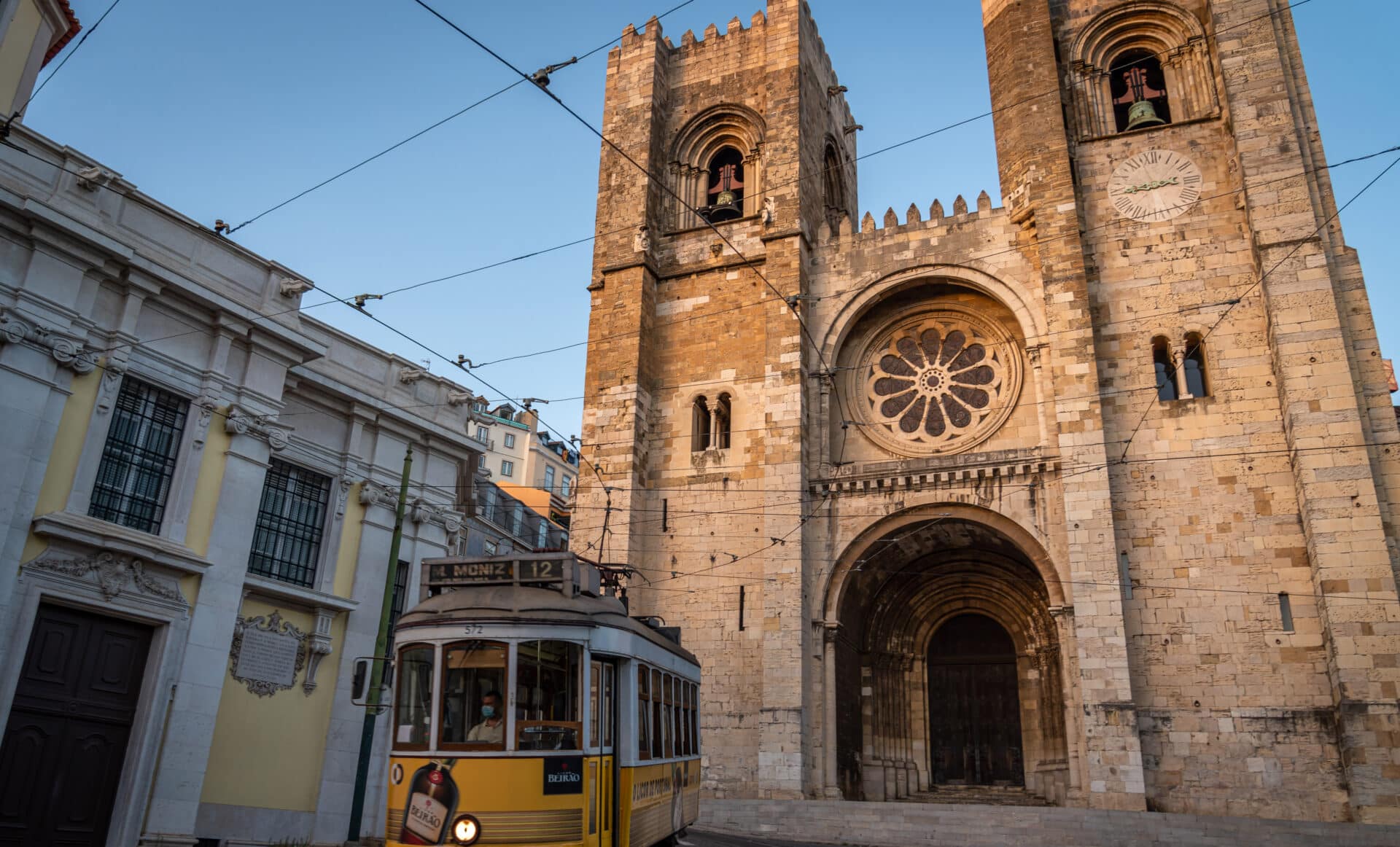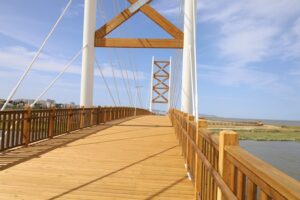August always promises two things; long-balmy days and an influx of tourists, all eager to explore the magic of our beloved country. From the wineries in the north to the enchanting coastline of the south, Portugal has become an adored destination for countless reasons.
No one needs reminding that this summer will be very different from usual, but sometimes we do need reminding of the incredible riches we have on our own doorstep. With international travel off the table for many this year, it’s the perfect time to (safely and responsibly) explore more of this nation we hold so dear. Making new discoveries and new memories, while supporting the local tourism offerings and businesses and enjoying them without the crowds.
In the first of a new monthly series highlighting both the most loved and lesser-visited corners of our country, we’re spotlighting our city of the seven hills, Lisbon. While a city-break might seem a strange choice during August, and these current times, I’ve recently spent three weeks admiring the monuments, museums and musical heritage of our beautiful capital.
With a mask donned and hand-sanitiser packed, it was incredible to enjoy near-empty squares and savour national palaces by myself, while feeling just as safe in the streets of central Lisbon as I do in my home village in the Algarve. Without the normal crowds visiting our world-class attractions, now is perhaps the time to enjoy these incredible parts of our history without worrying about long lines and photos full of fellow tourists.
Here are some of my favourites from my recent visit, some old staples and some new discoveries, perfect for planning into your own long weekend in Lisbon.
National Museum of Azulejo
It’s hard not to admire the Azulejos (ornate tiles) across the country, no matter how often we see them in our day to day life, but to learn more about the history of these artworks in Portugal, the Museu Nacional do Azulejo is a must-visit, and worth the slight tram detour out of the city centre.
The long history of Azulejos decorating churches is unforgettable here, with the museum being housed in the incredible cloistered convent of Madre de Deus, and the golden church is undoubtedly the star of the show. The collection spans from the 13th century to more modern examples of Azulejos, and the many rooms will take you on a history tour to fully understand how these beloved tiles become synonymous with Portugal.
It’s worth remembering that the Azulejo museum, like many of our other fantastic monuments, offers complimentary entry for Portugal residents on Sunday mornings. A combined ticket for the Azulejo Museum and the Panteão Nacional offers the chance to visit both these incredible buildings.
Carmo Archaeological Museum
Having admired the Carmo Archaeological Museum many times from miradouros (viewpoints) across Lisbon, the lack of visitors to the normally busy attractions made it the perfect time to venture inside. The ruins of the Church of Santa Maria do Carmo itself, a harsh reminder of the 1755 earthquake, provide a striking entrance to the museum, with their exposed to the sky archways.
The museum itself provides a small but informative collection, with a fantastic animated video taking you through the history of the church and local events, ideal for both children and adults. The outside nature of the church ruins lend themselves perfectly to performances in the safety of the open-air, and this summer will see Shakespeare performed, while hopefully, the Lisbon Under Stars performances will return soon. Keep an eye on the website (museuarqueologicodocarmo.pt) for updated events information.
Queluz National Palace
The palaces of Sintra are famous around the world, but away from the green hills we normally associate with these attractions is another part of this magical collection. In Queluz, a residential city in the Sintra region just a short train journey from Lisbon’s Rossio station, you’ll find the Queluz National Palace.
From the train station, on first glances, you might not realise this wonder is here, but a short walk will bring you to the blue-hued exterior of this previous summer royal residence dating back to 1747. Inside, you’ll be amazed by historical tales and grand dining rooms, ornately decorated bedrooms and vast collections of art and artefacts; the spacious gardens with their well-manicured shrubs the perfect finish to an afternoon exploring the palace.
Church of São Vicente de Fora
Lisbon’s most iconic monastery, Jerónimos in Belém was one of the few spots in the city that still seemed to be attracting a modest crowd, so I turned to the Monastery of São Vicente de Fora as an alternative and what a fantastic choice that was.
This imposing church and monastery that owns the skyline above the normal Alfama district photos offer free entrance to the church hall, however, the monastery, now a museum, is well worth the entry charge.
With various collections, and the history lessons to match, the main rooms and cloisters are tranquil and picturesque and, unbelievably, I didn’t see a fellow visitor here. The Baroque Azulejo collection is magnificent, while the views from the rooftop provide some of the best sweeping vistas of the city I have ever seen – be sure to bring your camera for this one!
Sunday Fado at Embaixada
Music, culture and heritage were sorely missed in the weeks we barely ventured outdoors, so in the week the nation celebrated what would have been famed Fado singer Amália Rodrigues’ birthday, it seemed apt to celebrate with the lyrics and music of this UNESCO celebrated musical performance.
While many concert venues remain closed, due to their size, the Real Fado concert at Embaixada shopping centre on a Sunday night was an intriguing option. Real Fado (eastbanc.pt/realfado) promises incredible music in incredible locations, such as the water reservoir at Mãe d’Água. Embaixada, in the Príncipe Real neighbourhood, is certainly a grand setting with wonderful acoustics. In its previous life it was a 19th-century palace with Moorish influences, now a boutique shopping centre celebrating local bands.
The concert was magical. Intimate, yet with plenty of space between the guests on separate tables. As the haunting lyrics fell over us, life for a moment felt almost normal again. Indeed, the fantastic drinks from Gin Lovers bar located in the centre likely helped.
To learn more about this timeless tradition, venture to the Museu do Fado to understand just how important Fado has been over the years, and why it’s an art form we should all cherish.
Museum of Puppets
The final stop on my tour of Lisbon heritage was the Museu da Marioneta, a wonderful collection of puppets and masks which share the history and stories of their use throughout Portuguese history, both here and abroad.
An unexpected bonus is the temporary exhibition, running until October and showing the work of Tim Burton and his famous animations. With original sketches and models from some of his previous movies, it was fascinating to see the level of detail that goes into creating these films.
Of course, like most museums in Lisbon, the building is a treat in itself. Stepping out from the collection into a sun-bathed courtyard of Convento das Bernardas, another slice of the nation’s history, I couldn’t help feel almost guilty I’d got to experience this Lisbon like this.
An incredible city in a moment of calm, attractions that offered nearly private experiences, famous tram routes with often near-empty carriages and a neighbourhood atmosphere of a small town throughout. It was a rare experience that I’m not sure we will ever see again, and one I’m so glad I took the time to enjoy – hopefully you’ll be inspired to explore more of our capital’s culture in the coming months.
By Daniel James
|| features@algarveresident.com
An avid traveller, Daniel James found a much-loved home in Portugal. Recently, he co-founded Guide2Portugal.com to inspire visitors and locals to explore and discover more of our magical country.
































